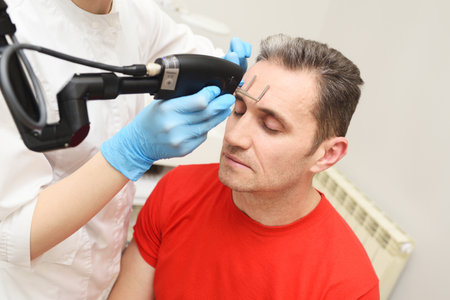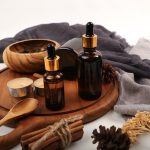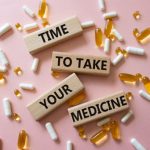1. Understanding Swelling and Bruising
Swelling and bruising are common side effects after many cosmetic procedures. Whether youre getting Botox, dermal fillers, a facelift, or liposuction, your body responds to the treatment with inflammation and changes in blood flow. This reaction is completely normal and usually temporary.
Why Do Swelling and Bruising Happen?
When a needle or surgical tool enters the skin, it can damage small blood vessels and tissues. This leads to two things:
- Swelling: Caused by fluid buildup in the tissue as part of your body’s natural healing process.
- Bruising: Happens when tiny blood vessels (capillaries) break and leak blood under the skin, creating discoloration.
Factors That Influence Swelling and Bruising
The severity of swelling and bruising can vary based on several factors. Here’s a breakdown:
| Factor | Description |
|---|---|
| Type of Procedure | Surgical treatments generally cause more swelling and bruising than non-invasive ones like fillers or Botox. |
| Injection Technique | The skill level of your provider can affect how much trauma occurs during the procedure. |
| Your Skin Type | Sensitive skin may be more prone to bruising and swelling. |
| Medications and Supplements | Certain medications (like blood thinners) or supplements (like fish oil or vitamin E) can increase bleeding risk. |
| Lifestyle Habits | Smoking, alcohol use, and lack of sleep can slow down healing. |
| Your Body’s Natural Response | Some people are just more likely to swell or bruise due to genetics. |
Mild vs. Severe Reactions
Mild swelling or light bruising is typical after most treatments, but if you notice excessive pain, dark purple bruises that spread quickly, or swelling that worsens over several days, it’s best to check in with your provider.
2. Pre-Procedure Tips to Minimize Swelling and Bruising
Getting ready for a cosmetic procedure is more than just showing up on the big day. What you do in the days leading up to your treatment can make a big difference when it comes to how much swelling and bruising you experience afterward. Here are some simple steps you can take before your procedure to help your body recover faster and look your best sooner.
Avoid Blood-Thinning Medications and Supplements
Certain medications and supplements can thin your blood, making you more prone to bruising. Its important to avoid these for at least 7–10 days before your procedure, unless otherwise directed by your doctor.
Common Blood Thinners to Avoid
| Type | Examples |
|---|---|
| Over-the-Counter Pain Relievers | Aspirin, Ibuprofen (Advil, Motrin), Naproxen (Aleve) |
| Supplements | Vitamin E, Fish Oil, Garlic, Ginkgo Biloba, Ginseng |
| Prescription Medications | Consult your doctor before stopping any prescribed meds |
Start Taking Arnica or Bromelain (If Recommended)
Some providers recommend natural supplements like arnica or bromelain to help reduce inflammation and bruising. These are often started a few days before the procedure. Always check with your provider before starting any supplement.
Stay Hydrated and Eat Nutritious Foods
Your body needs proper hydration and nutrients to heal effectively. Drinking plenty of water and eating foods rich in vitamins C and K—like leafy greens, citrus fruits, and bell peppers—can support healthy skin and blood vessels.
Avoid Alcohol and Smoking
Avoid alcohol for at least 24–48 hours before your procedure since it can increase the risk of bruising. Smoking should also be avoided as it slows down healing and affects blood circulation.
Talk to Your Provider About Your Medical History
If you have a history of easy bruising, bleeding disorders, or if youre taking blood thinners for medical reasons, let your provider know during your consultation. They may adjust your treatment plan or offer additional tips to minimize risks.
Plan Ahead for Downtime
Give yourself time to rest after the procedure. Arrange your schedule so you don’t have major events immediately after treatment. This will allow swelling or bruising to subside naturally without added stress.
Pro Tip:
Ask your provider about using cold compresses right after the procedure—they can help reduce initial swelling if used correctly within the first 24 hours post-treatment.
By taking these pre-procedure steps seriously, youre setting yourself up for a smoother recovery with less discomfort and quicker results.

3. Immediate Post-Procedure Care
The first 24 to 48 hours after a cosmetic procedure are critical for minimizing swelling and bruising. Taking the right steps during this period can significantly improve your recovery experience and help you achieve the best results.
Apply Cold Compresses
Using cold compresses is one of the most effective ways to reduce swelling. Cold helps constrict blood vessels, which can limit bruising and inflammation. Heres how to do it right:
| Step | Details |
|---|---|
| When to Start | Immediately after the procedure |
| Duration | 15–20 minutes at a time, with 20-minute breaks in between |
| Frequency | Every hour while awake during the first 24 hours |
| Method | Use a clean cloth-wrapped ice pack or gel pack; never place ice directly on skin |
Keep Your Head Elevated
Elevating your head helps fluids drain away from the treated area, reducing pressure and swelling. This is especially important after facial procedures like fillers, facelifts, or eyelid surgery.
Tips for Proper Head Elevation:
- Use two pillows when sleeping or rest in a recliner chair set at a 45-degree angle.
- Avoid bending over or lying flat for extended periods.
Avoid Heat and Strenuous Activity
Your body needs time to heal, so it’s essential to avoid anything that increases blood flow too much. This includes hot showers, saunas, and intense workouts.
You Should Also:
- Avoid alcohol and salty foods — both can increase swelling.
- Stay hydrated with water and eat light, healthy meals.
The care you take immediately after your cosmetic procedure sets the tone for your overall healing process. Be gentle with yourself, follow these simple guidelines, and always refer to your provider’s specific aftercare instructions.
4. Home Remedies and Lifestyle Adjustments
After a cosmetic procedure, taking care of yourself at home can make a big difference in how quickly you heal and how much swelling or bruising you experience. There are several simple and natural ways to support your recovery process.
Natural Remedies to Try
Certain natural remedies have anti-inflammatory properties that may help minimize swelling and bruising. Here are some gentle options:
| Remedy | How It Helps | How to Use |
|---|---|---|
| Arnica Montana | A popular homeopathic remedy known to reduce bruising and inflammation. | Apply arnica gel to the affected area 2-3 times daily, or take oral tablets as directed. |
| Bromelain (from pineapple) | An enzyme that helps reduce swelling and promotes healing. | Take bromelain supplements or eat fresh pineapple (especially the core) daily. |
| Aloe Vera | Cools the skin and reduces inflammation. | Apply pure aloe vera gel gently on the swollen or bruised area twice daily. |
| Coconut Oil | Mildly anti-inflammatory and moisturizing for skin recovery. | Massage a small amount onto the area once or twice daily. |
The Role of Diet in Healing
Your body needs the right nutrients to recover faster. Focus on eating foods rich in vitamins and minerals that support tissue repair and reduce inflammation.
Nutrients That Help with Swelling and Bruising:
- Vitamin C: Supports collagen production and helps repair damaged blood vessels. Found in oranges, strawberries, bell peppers, and broccoli.
- Zinc: Boosts immune function and wound healing. Found in lean meats, pumpkin seeds, and lentils.
- Vitamin K: Helps with blood clotting and reduces bruising. Found in leafy greens like kale, spinach, and Swiss chard.
- Bioflavonoids: Enhance vitamin C absorption and improve capillary strength. Found in citrus fruits, berries, and onions.
The Importance of Staying Hydrated
Sipping water throughout the day keeps your cells hydrated, flushes out toxins, and supports overall healing. Aim for at least 8–10 glasses of water daily unless your doctor says otherwise. Avoid alcohol and caffeine during your initial recovery phase as they can dehydrate you and delay healing.
Lifestyle Habits That Support Recovery
- Avoid strenuous activity: Give your body time to rest so it can heal properly without added stress or movement around the treated area.
- Keeps your head elevated: When resting or sleeping, use extra pillows to keep your head above heart level—this helps reduce facial swelling.
- Avoid smoking: Smoking restricts blood flow and delays healing—try to avoid it before and after your procedure as recommended by your provider.
- No touching or massaging unless advised: Avoid pressing or rubbing the treated area unless specifically instructed by your practitioner.
Tuning into natural remedies, making smart food choices, drinking plenty of water, and adjusting certain habits at home can all contribute to a smoother recovery with less discomfort after cosmetic treatments.
5. When to Seek Medical Attention
After a cosmetic procedure, its totally normal to experience some swelling and bruising. These are your bodys natural responses to the treatment and usually fade on their own within a few days to a couple of weeks. However, its important to know when these symptoms may signal something more serious that needs medical attention.
What’s Normal?
Mild to moderate swelling and bruising are expected after most cosmetic treatments like fillers, Botox, or laser procedures. Here’s what you can typically expect:
| Symptom | Normal |
|---|---|
| Swelling | Peaks within 48 hours, then gradually decreases |
| Bruising | Appears within 24 hours, fades in 5–10 days |
| Tenderness | Mild discomfort around treated area |
| Slight redness | Temporary and localized |
Warning Signs You Shouldn’t Ignore
If you notice any of the following symptoms, it might be time to check in with your provider or seek medical help:
- Severe or worsening pain not relieved by over-the-counter medication
- Significant swelling that doesn’t improve after 72 hours
- Bruising that spreads beyond the treated area or becomes unusually dark
- Signs of infection like pus, warmth, fever, or chills
- Numbness or tingling that lasts longer than expected
- Hard lumps or nodules that don’t go away over time
- Skin discoloration (especially if it looks blue, grey, or blotchy)
- Trouble breathing or swallowing (this is an emergency—call 911)
Trust Your Gut
If something doesn’t feel right—even if you’re not sure—it’s always better to reach out. Contact your cosmetic provider first; they can let you know if what you’re experiencing is part of the normal healing process or if it needs further evaluation. Don’t wait too long—early intervention can prevent complications and give you peace of mind.


